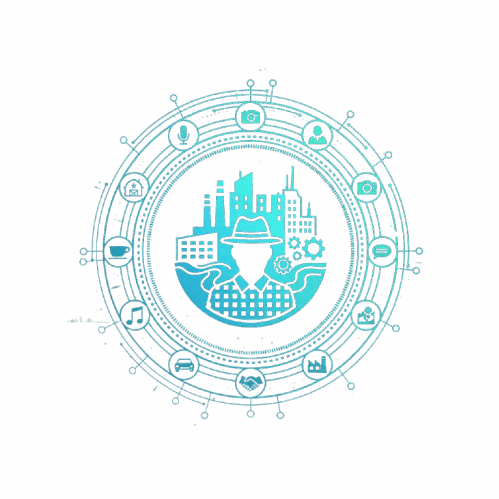Rust Belt Stories
📖 Rust Belt Stories — Narratives of Resilience, Culture & Midwestern Identity

The Rust Belt is a region filled with stories — stories of industrial might, economic collapse, cultural
survival, and urban transformation. At Rust Belt Chic, the Rust Belt Stories
section is devoted to capturing these experiences with depth, honesty, and human connection. These stories
reflect the heart of a region shaped by steel, sweat, immigration, blue-collar pride, and modern creativity.
From the echoes of machinery in long-abandoned factories to the voices of new generations breathing life back
into old neighborhoods, Rust Belt stories are rich, emotional, and inspiring. They remind us that even in times
of challenge, communities can rebuild and reimagine their future. This section brings those narratives to light.
🏭 The Soul of Industrial America
The Rust Belt’s identity is rooted in its industrial past. Steel mills, auto plants, coal mines, railroads,
and factories powered the American economy for decades. These industries shaped the lives of millions, forming
tight-knit towns where work was more than a paycheck — it was a shared purpose.
Rust Belt Stories documents:
- 🔧 Life in the steel mills & auto plants
- 👷 The pride of factory workers
- 🏚️ The emotional impact of plant closures
- 🚂 Railroads & shipping industries that fueled local economies
- 🏘️ Generational stories passed down through families
These aren’t just economic histories — they’re personal histories that define Midwestern identity.
💬 Voices From the Communities
Behind every Rust Belt city are the stories of working people: welders, machinists, teachers, bar owners,
artists, immigrants, bus drivers, and steelworkers. Their voices give the region its character and resilience.
This section highlights:
- 👵 Stories from veterans of the industrial era
- 🧑🏫 Teachers who witnessed neighborhood changes
- 🍺 Bar owners who became community anchors
- 🧑🎨 Artists repurposing old structures into studios
- 🚜 Small-town residents preserving fading traditions
Each voice reveals how individuals navigate change while holding onto pride and community.
🏘️ Neighborhoods in Transition
Many Rust Belt neighborhoods saw decades of decline — population loss, empty storefronts, deteriorating
buildings, and shrinking job opportunities. But today, these same neighborhoods are slowly reawakening.
Rust Belt Stories explores:
- 🏚️ Abandoned buildings becoming art hubs
- ☕ Old diners revived by new owners
- 🧱 Restored brick homes filled with new families
- 📈 Young professionals moving into affordable cities
- 🖼️ Murals transforming gray alleys into cultural canvases
Each transformation tells a story of hope, creativity, and community-driven revival.
🌍 Immigration & Heritage
The cultural fabric of the Midwest was woven by immigrants — Eastern Europeans, Italians, African Americans,
Irish workers, Middle Eastern families, and many others. Their traditions built the region’s food, religion,
music, sports, and neighborhoods.
Rust Belt Stories explores:
- 🍞 Family-owned bakeries with 100-year-old recipes
- 🎺 Polka music & ethnic festivals
- 🕌 Churches, temples & cultural organizations
- 🏠 Multi-generational households preserving heritage
- 🍲 Immigrant food shaping local identity
These narratives celebrate diversity and honor the roots of Midwestern culture.
🎨 The Rise of Creativity in the Rust Belt
Once known only for factories and machinery, Rust Belt cities are now hubs of art, design, music, and innovation.
Creativity is one of the region’s most powerful tools of rebirth.
This section features:
- 🎨 Local artists transforming vacant buildings
- 🎸 Indie music scenes & underground venues
- 🧵 Makers, crafters & urban artisans
- 🏭 Factories reused as studios, museums & breweries
- 📚 Writers documenting the true spirit of the Midwest
Creativity gives new life to old spaces and new meaning to old stories.
🚶 Human Stories of Struggle & Strength
Not all Rust Belt stories are about revival — many are about hardship, loss, and survival. The region has
faced unemployment, population decline, addiction crises, and economic challenges. Yet, within these struggles,
people continue to show extraordinary resilience.
Rust Belt Stories documents:
- 💔 Families affected by factory closures
- 👣 Individuals rebuilding after personal hardship
- 🤝 Community groups supporting one another
- 🕯️ Neighborhoods healing from loss
- 🔄 The slow but steady process of recovery
These powerful stories reveal the emotional heartbeat of the Midwest.
📸 Photography That Captures Real Life
Rust Belt photography is iconic — abandoned factories, brick alleys, neon bar signs, frosty winters, urban
sunsets over rivers, and murals splashed on old walls. Each image is a story in itself.
On this page, readers will find:
- 🏭 Industrial landscapes
- 🌆 Gritty city scenes
- 🚦 Street culture & nightlife
- 📜 Historic neighborhoods
- 🧱 Raw textures of rust, metal & brick
These visuals help readers feel the atmosphere of the region — its grit, charm, and authenticity.
✨ Conclusion
The Rust Belt Stories section is dedicated to preserving the memories, emotions, and
experiences that define the Midwest. These stories honor the past, celebrate the present, and illuminate the
people who continue shaping the region’s future.
In every city, every neighborhood, and every family, there are stories worth telling — stories of grit,
creativity, survival, tradition, and pride. Rust Belt Chic brings these narratives to life, ensuring that the
voices of the Midwest are heard, remembered, and appreciated.
Welcome to the stories that built the Rust Belt — and continue to move it forward.
